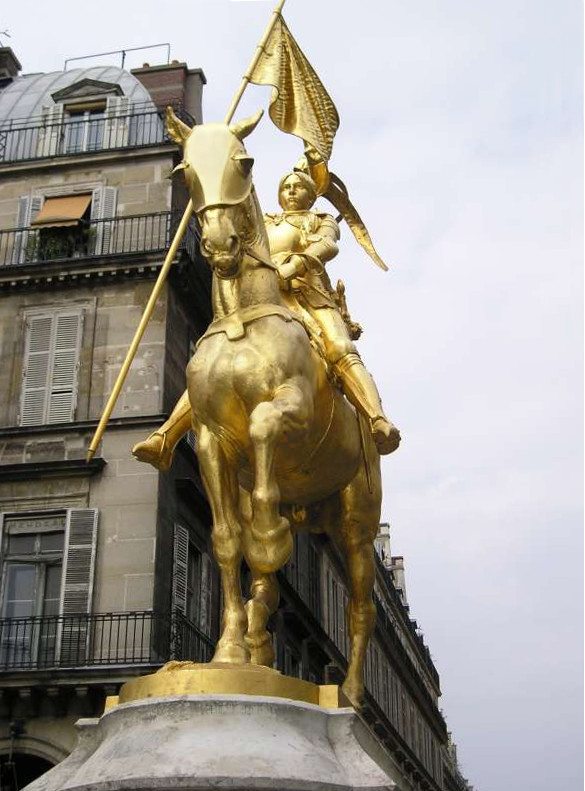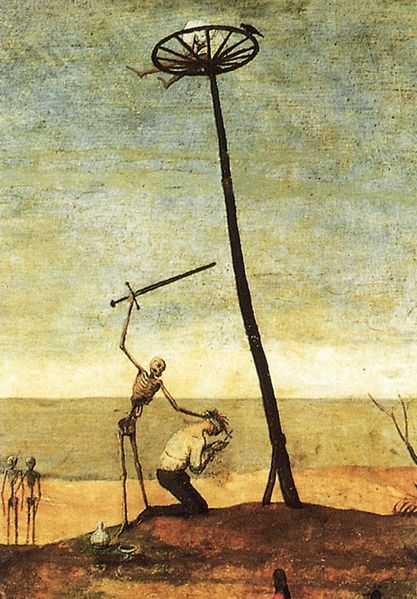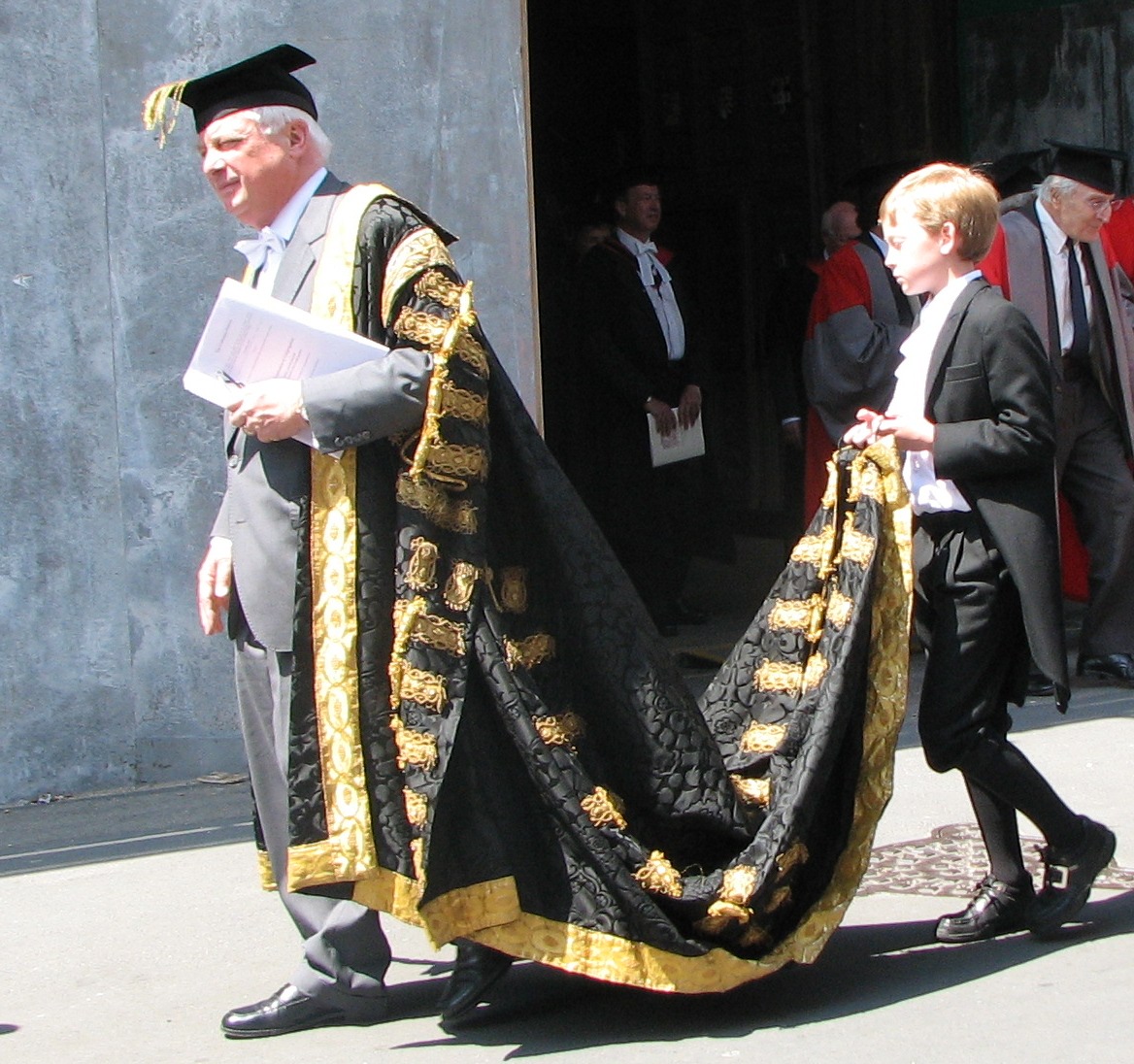|
Saint Joan (play)
''Saint Joan'' is a play by George Bernard Shaw about 15th-century French military figure Joan of Arc. Premiering in 1923, three years after her canonization by the Roman Catholic Church, the play reflects Shaw's belief that the people involved in Joan's trial acted according to what they thought was right. He wrote in his preface to the play: There are no villains in the piece. Crime, like disease, is not interesting: it is something to be done away with by general consent, and that is all here isabout it. It is what men do at their best, with good intentions, and what normal men and women find that they must and will do in spite of their intentions, that really concern us. Michael Holroyd has characterised the play as "a tragedy without villains" and also as Shaw's "only tragedy". John Fielden has discussed further the appropriateness of characterising ''Saint Joan'' as a tragedy. The text of the published play includes a long Preface by Shaw. Characters * Robert de B ... [...More Info...] [...Related Items...] OR: [Wikipedia] [Google] [Baidu] |
George Bernard Shaw
George Bernard Shaw (26 July 1856 – 2 November 1950), known at his insistence simply as Bernard Shaw, was an Irish playwright, critic, polemicist and political activist. His influence on Western theatre, culture and politics extended from the 1880s to his death and beyond. He wrote more than sixty plays, including major works such as ''Man and Superman'' (1902), ''Pygmalion (play), Pygmalion'' (1913) and ''Saint Joan (play), Saint Joan'' (1923). With a range incorporating both contemporary satire and historical allegory, Shaw became the leading dramatist of his generation, and in 1925 was awarded the Nobel Prize in Literature. Born in Dublin, Shaw moved to London in 1876, where he struggled to establish himself as a writer and novelist, and embarked on a rigorous process of self-education. By the mid-1880s he had become a respected theatre and music critic. Following a political awakening, he joined the Gradualism (politics), gradualist Fabian Society and became its most pr ... [...More Info...] [...Related Items...] OR: [Wikipedia] [Google] [Baidu] |
Pierre Cauchon
Pierre Cauchon (1371 – 18 December 1442) was Bishop of Beauvais from 1420 to 1432. He was a strong partisan of English interests in France during the latter years of the Hundred Years' War. He was the judge in the trial of Joan of Arc and played a key role in her execution. The Catholic Church overturned his verdict in 1456. Background Cauchon came from a middle-class family in Rheims. He entered the clergy as a teenager and went to Paris, where he studied at the University of Paris. Cauchon was a brilliant student in the liberal arts. He followed with studies in canon law and theology and became a priest. Early career By 1404, Cauchon was curé of Égliselles and sought a post near Rheims. He defended the University of Paris in a quarrel against Toulouse. Cauchon sought advancement through noble patronage. He allied himself with Duke John the Fearless of Burgundy and later his successor, Philip the Good. In 1407, Cauchon was part of a mission from the crown of Franc ... [...More Info...] [...Related Items...] OR: [Wikipedia] [Google] [Baidu] |
Catherine Of Alexandria
Catherine of Alexandria (also spelled Katherine); grc-gre, ἡ Ἁγία Αἰκατερίνη ἡ Μεγαλομάρτυς ; ar, سانت كاترين; la, Catharina Alexandrina). is, according to tradition, a Christian saint and virgin, who was martyred in the early fourth century at the hands of the emperor Maxentius. According to her hagiography, she was both a princess and a noted scholar who became a Christian around the age of 14, converted hundreds of people to Christianity and was martyred around the age of eighteen. More than 1,100 years after Catherine's martyrdom, Joan of Arc identified her as one of the saints who appeared to and counselled her.Williard Trask, ''Joan of Arc: In Her Own Words'' (Turtle Point Press, 1996), 99 The Eastern Orthodox Church venerates her as a Great Martyr and celebrates her feast day on 24 or 25 November, depending on the regional tradition. In Catholicism, Catherine is traditionally revered as one of the Fourteen Holy Helpers a ... [...More Info...] [...Related Items...] OR: [Wikipedia] [Google] [Baidu] |
Margaret The Virgin
Margaret, known as Margaret of Antioch in the West, and as Saint Marina the Great Martyr ( grc-gre, Ἁγία Μαρίνα) in the East, is celebrated as a saint on 20 July in the Western Rite Orthodoxy, Roman Catholic Church and Anglicanism, on 17 July (Julian calendar) by the Eastern Orthodox Church and on Epip 23 and Hathor 23 in the Coptic Orthodox Church of Alexandria. She was reputed to have promised very powerful indulgences to those who wrote or read her life, or invoked her intercessions; these no doubt helped the spread of her following. Margaret is one of the Fourteen Holy Helpers, and is one of the saints Joan of Arc claimed to have spoken with. Hagiography According to a 9th-century martyrology of Rabanus Maurus, she suffered at Antioch in Pisidia (in what is now Turkey) in around 304, during the Diocletianic persecution. She was the daughter of a pagan priest named Aedesius. Her mother having died soon after her birth, Margaret was nursed by a Christia ... [...More Info...] [...Related Items...] OR: [Wikipedia] [Google] [Baidu] |
Gentleman
A gentleman (Old French: ''gentilz hom'', gentle + man) is any man of good and courteous conduct. Originally, ''gentleman'' was the lowest rank of the landed gentry of England, ranking below an esquire and above a yeoman; by definition, the rank of ''gentleman'' comprised the younger sons of the younger sons of peers, and the younger sons of a baronet, a knight, and an esquire, in perpetual succession. As such, the connotation of the term ''gentleman'' captures the common denominator of gentility (and often a coat of arms); a right shared by the peerage and the gentry, the constituent classes of the British nobility. Therefore, the English social category of ''gentleman'' corresponds to the French ''gentilhomme'' (nobleman), which in Great Britain meant a member of the peerage of England. In that context, the historian Maurice Keen said that the social category of gentleman is "the nearest, contemporary English equivalent of the ''noblesse'' of France." In the 14th century, ... [...More Info...] [...Related Items...] OR: [Wikipedia] [Google] [Baidu] |
Soldier
A soldier is a person who is a member of an army. A soldier can be a conscripted or volunteer enlisted person, a non-commissioned officer, or an officer. Etymology The word ''soldier'' derives from the Middle English word , from Old French or , meaning mercenary, from , meaning shilling's worth or wage, from or , shilling. The word is also related to the Medieval Latin , meaning soldier (literally, "one having pay"). These words ultimately derive from the Late Latin word , referring to an Ancient Roman coin used in the Byzantine Empire. Occupational designations In most armies use of the word "soldier" has taken on a more general meaning due to the increasing specialization of military occupations that require different areas of knowledge and skill-sets. As a result, "soldiers" are referred to by names or ranks which reflect an individual's military occupation specialty arm, service, or branch of military employment, their type of unit, or operational employment or techn ... [...More Info...] [...Related Items...] OR: [Wikipedia] [Google] [Baidu] |
Executioner
An executioner, also known as a hangman or headsman, is an official who executes a sentence of capital punishment on a legally condemned person. Scope and job The executioner was usually presented with a warrant authorising or ordering him to ''execute'' the sentence. The warrant protects the executioner from the charge of murder. Common terms for executioners derived from forms of capital punishment—though they often also performed other physical punishments—include hangman (hanging) and headsman (beheading). In the military, the role of executioner was performed by a soldier, such as the ''provost''. A common stereotype of an executioner is a hooded medieval or absolutist executioner. Symbolic or real, executioners were rarely hooded, and not robed in all black; hoods were only used if an executioner's identity and anonymity were to be preserved from the public. As Hilary Mantel noted in her 2018 Reith Lectures, "Why would an executioner wear a mask? Everybody kne ... [...More Info...] [...Related Items...] OR: [Wikipedia] [Google] [Baidu] |
Inquisitor
An inquisitor was an official (usually with judicial or investigative functions) in an inquisition – an organization or program intended to eliminate heresy and other things contrary to the doctrine or teachings of the Catholic faith. Literally, an inquisitor is one who "searches out" or "inquires" ( Latin ''inquirere'' < ''quaerere'', 'to seek'). Inquisitors sought out the social networks that people used to spread heresy. There were accounts where the Inquisition could not tell who was a heretic or devout, and they were killed anyway. One of these accounts was at the storming of . The abbot was recorded as saying “Kill them. For God knows who are his.” This brought up concern about the role the Inquisition w ... [...More Info...] [...Related Items...] OR: [Wikipedia] [Google] [Baidu] |
Brother (Christian)
A religious brother is a member of a Christian religious institute or religious order who commits himself to following Christ in consecrated life of the Church, usually by the vows of poverty, chastity and obedience. He is a layman, in the sense of not being ordained as a deacon or priest, and usually lives in a religious community and works in a ministry appropriate to his capabilities. A brother might practice any secular occupation. The term "brother" is used as he is expected to be as a brother to others. Brothers are members of a variety of religious communities, which may be contemplative, monastic, or apostolic in character. Some religious institutes are composed only of brothers; others are so-called "mixed" communities that are made up of brothers and clerics (priests or ministers, and seminarians). It is also common in many Christian groups to refer to other members as "brother" or "sister". In particular, the Christian Shakers use the title for all male adult membe ... [...More Info...] [...Related Items...] OR: [Wikipedia] [Google] [Baidu] |
Canon (priest)
A canon (from the Latin , itself derived from the Greek , , "relating to a rule", "regular") is a member of certain bodies in subject to an ecclesiastical rule. Originally, a canon was a cleric living with others in a clergy house or, later, in one of the houses within the precinct of or close to a cathedral or other major church and conducting his life according to the customary discipline or rules of the church. This way of life grew common (and is first documented) in the 8th century AD. In the 11th century, some churches required clergy thus living together to adopt the rule first proposed by Saint Augustine that they renounce private wealth. Those who embraced this change were known as Augustinians or Canons Regular, whilst those who did not were known as secular canons. Secular canons Latin Church In the Latin Church, the members of the chapter of a cathedral (cathedral chapter) or of a collegiate church (so-called after their chapter) are canons. Depending on ... [...More Info...] [...Related Items...] OR: [Wikipedia] [Google] [Baidu] |
Chaplain
A chaplain is, traditionally, a cleric (such as a minister, priest, pastor, rabbi, purohit, or imam), or a lay representative of a religious tradition, attached to a secular institution (such as a hospital, prison, military unit, intelligence agency, embassy, school, labor union, business, police department, fire department, university, sports club), or a private chapel. Though originally the word ''chaplain'' referred to representatives of the Christian faith, it is now also applied to people of other religions or philosophical traditions, as in the case of chaplains serving with military forces and an increasing number of chaplaincies at U.S. universities. In recent times, many lay people have received professional training in chaplaincy and are now appointed as chaplains in schools, hospitals, companies, universities, prisons and elsewhere to work alongside, or instead of, official members of the clergy. The concepts of a ''multi-faith team'', ''secular'', ''generic ... [...More Info...] [...Related Items...] OR: [Wikipedia] [Google] [Baidu] |
Page (servant)
A page or page boy is traditionally a young male attendant or servant, but may also have been a messenger in the service of a nobleman. During wedding ceremonies, a page boy is often used as a symbolic attendant to carry the rings. Etymology The origin of the term is uncertain, but it may come either from the Latin ''pagus'' (servant), possibly linked to peasant, or an earlier Greek word (''pais'' = child). The medieval page In medieval times, a page was an attendant to a nobleman, a knight, a governor or a castellan. Until the age of about seven, sons of noble families would receive training in manners and basic literacy from their mothers or other female relatives. Upon reaching seven years of age, a boy would be sent to the castle, great house or other estate of another noble family. This would match the age at which apprenticeships or servants' employment would be entered into by young males from lower social classes. A young boy served as a page for about seven ... [...More Info...] [...Related Items...] OR: [Wikipedia] [Google] [Baidu] |








